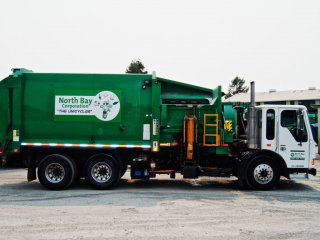
Electric Garbage trucks
 Turbine engines are ideal technology for jets. They cram piles of power into a small, lightweight package, and have revolutionized air travel since their invention in the 1930s. Ian Wright sees them revolutionizing something else: garbage trucks.
Turbine engines are ideal technology for jets. They cram piles of power into a small, lightweight package, and have revolutionized air travel since their invention in the 1930s. Ian Wright sees them revolutionizing something else: garbage trucks.
Wright is a founder of Tesla Motors who left early on to launch Wrightspeed. He wanted to build a high-performance electric sports cars and even created a concept called the X1 that could hit 60 mph in under three seconds. But Wright realized he could make a much bigger difference tackling trucks most often associated with early morning wakeups, diesel fumes, and the stench of rotting garbage.
Sure, garbage trucks are boring. But they’re devilish environmental actors, belching diesel exhaust all day as they creep through the city. So Wright developed an electric drivetrain that bolts right in. When the battery runs low, a turbine spins up, burning fuel to generate electricity to keep the truck moving. Coupled to motors at the wheels, it makes the system more similar to a train, which have used hybrid engines for decades, or a hugely overpowered Chevrolet Volt.
Wright says the setup trumps the inefficient straight-six diesel engine and heavy gearbox now used in trucks. “If you were to start with a clean sheet, you’d make it more like an locomotive.”
These 66, 000-pound trucks won’t win any drag races (no ludicrous mode), but the innovative drivetrain could reduce fuel consumption by 70 percent. The electric motors provide 400 horsepower and enough torque to happily trundle up a 40 percent grade. The motors double as generators, capturing energy as the truck slows. It’s a seriously beefed up version of what your Prius offers: They provide 1, 000 horsepower of stopping power—the kind of might a truck driver with a heavy load on a stop-start route tends to demand.
An overnight charge provides 20 miles of range before the turbine kicks in. At just 250 pounds, about one tenth the weight of a conventional engine of similar power, it’s a featherweight. If you’re worrying about noise, relax: The trucks run on electricity most of the time, and even with the turbine running they are said to be far quieter than diesel trucks.
That sounds great, but turbines have a spotty history in vehicles. Chrysler plopped them into cars in the 1960s and ’70s but gave up on the scheme. A Lotus racecar of similar vintage was fast but unreliable, and generally considered crazy. Other automakers have considered small turbines as range extenders, but found they don’t scale down well.









